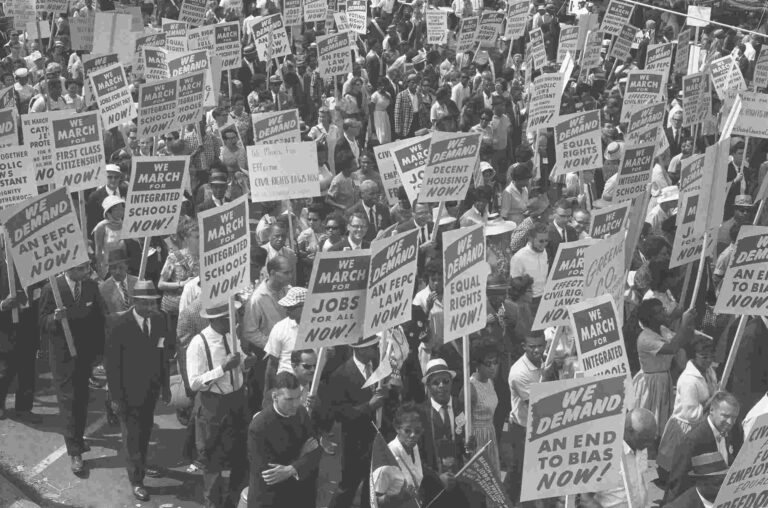Fall is nearly upon us, as is that three-pronged perfect storm that swirls around the nation.
The deadly coronavirus pandemic rages on, along with unprecedented unemployment which could lead to homelessness and hunger on a biblical scale, and worldwide protests against social injustice, sparked by the murders of George Floyd and other people of color by law enforcement.
While progress in groundbreaking laws for voting rights and other anti-discrimination measures must be acknowledged, the real proof of change for the better in the area of race relations has to originate in the heart.
Mine was pretty sheltered from the full brunt of discrimination when I was growing up as a child in the 1960s. My home parish, St. Peter Claver in Baltimore, was all black with the exception of the pastoral team.
Church services and Sunday school were always full, as were CYO meetings on Friday nights. My peers and I saw ourselves as smart, good looking and fun to be with. Who wouldn’t want to have us around?
But as we began venturing away from our neighborhoods and to other parishes, that sense of welcome evaporated.
When a classmate and I attended the ordination of a Josephite priest assigned to our church, we were bypassed at the Communion rail by a priest from another order. My family was mocked by a priest who called us a disgrace because we were leaving church after Communion at 5 a.m. Mass, but Mom and I had to catch a Greyhound bus for her job in Jessup. He bet we didn’t put 50 cents in the collection basket – but I had put more.
I was one of three black freshmen at The Catholic High School of Baltimore in 1962. Neither of us at first was asked to be a little sister by any of the seniors. Just when I thought I’d die of humiliation, Laura Rizzo, the senior class vice-president, stepped forward and made all three of us her little sisters. Her heart was as warm as her smile.
When the 1963 March on Washington took place, I was in the caravan of buses leaving from St. Peter Claver. Once in the nation’s capital, I tired from all the walking. I wish I could say I was at the Lincoln Memorial when the Rev. Dr. Martin Luther King Jr. and John Lewis delivered stirring speeches calling for racial equality, but I wasn’t. A classmate and I sought shelter under an evergreen tree, listening from afar, but our hunger for equality never left us.
Fifty-seven years later, how does one make those blind to racism see? We all must look within ourselves for the courage to acknowledge prejudices introduced to us as children. Then we must hold up those stereotypes against what God himself says about the human race his Son saw fit to die for.
The church is in a unique position to offer forums for frank discussions of race and where we go from here.
I am proud of Archbishop William E. Lori for his ongoing calls to all of us to denounce racism. In his July 27 column for America magazine, for example, he underscores how church teaching already explains why Black lives matter, and that “affirming the dignity of Black lives diminishes no one else’s dignity.”
Today I refuse to allow anxiety to overwhelm me. I know who – and whose – I am: a legal resident of this earth who has been given dominion over the earth (Gn 1:26). God would be untrue to himself if he took back that dominion, even to save us from ourselves and the evil that exists illegally in our world.
We all are granted the thunderous privilege of inviting God Almighty to intervene in the affairs of men. Thus my prayer for coping these days: “Come, Lord Jesus! Save your people! Banish the evil that is ravishing our lives! Establish your kingdom on Earth!”
Copyright © 2020 Catholic Review Media



